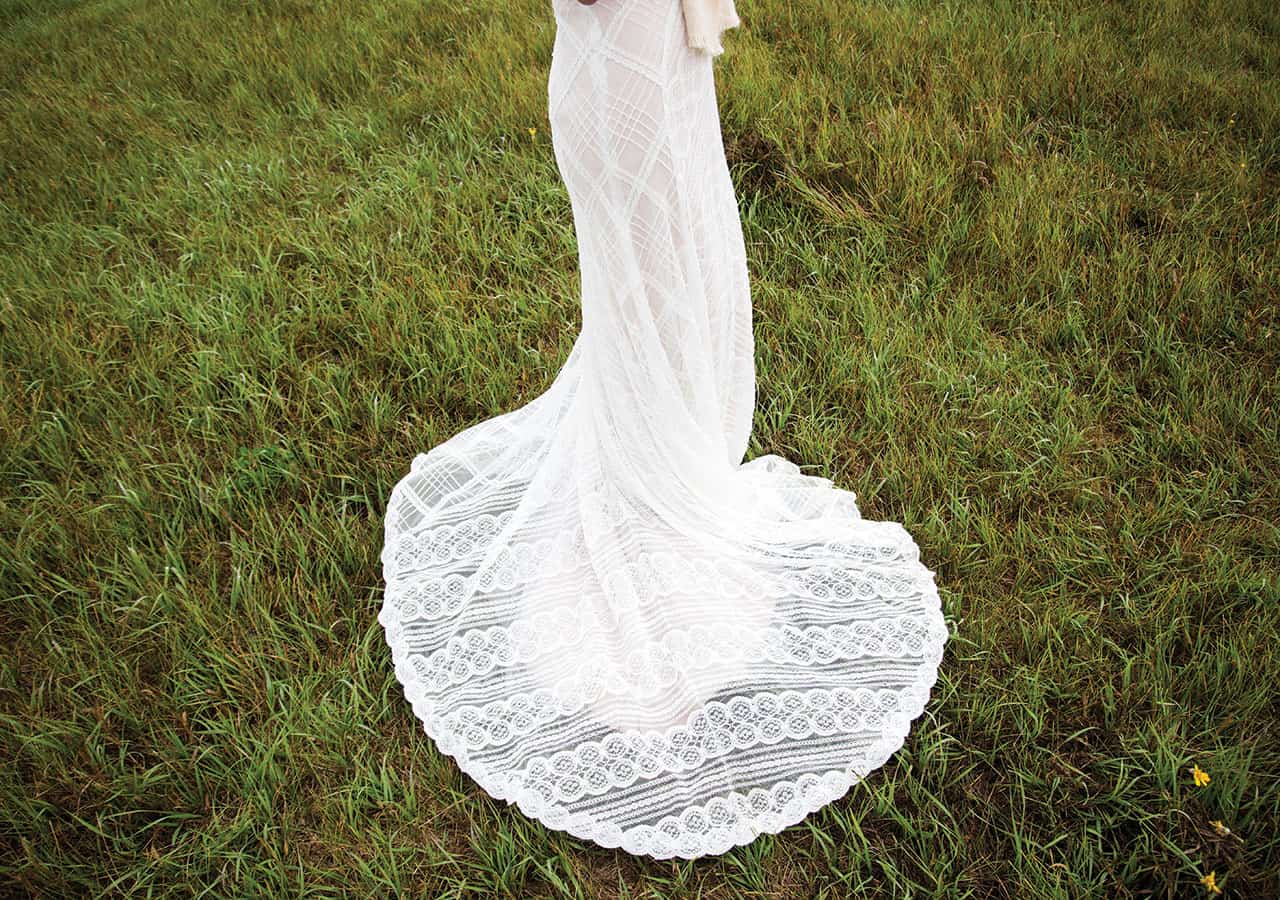A TREASURED KEEPSAKE
A TREASURED KEEPSAKE
Preserving your wedding dress

You spent hours trying on countless gowns before finding the dress for your big day. Now that your wedding is over, what should you do with likely the most expensive piece of clothing you’ve ever bought?
Some brides hang up their dresses in their closets to serve as a reminder of their recent nuptials. Others put their dresses back in their garment bags with good intentions of cleaning and preserving them sometime soon. And, there are some fortunate brides who don’t have to think about any maintenance details; their mothers, wedding planners, or friends scoop up their dresses and arrange for cleaning and storage without any input from the bride.
Whether a wedding dress is a vintage hand-me-down or a brand-new gown by a famous designer, planning for proper cleaning and preservation will ensure it remains a treasured keepsake for generations to come.
Some advice from wedding-dress experts:
Don’t delay. Have your wedding dress cleaned and preserved as soon after your wedding day as possible. Why the rush? Stains left untreated can damage the gown’s fabric. Sugar spots—from soda, wine, or cake spills—can dry without leaving a noticeable mark, but will caramelize and turn brown over time without proper handling. Salt from perspiration can cause a dress’ lining to eventually become brittle. Most dry-cleaning solutions do not remove sugar or salt without pretreatment. Be sure to review the condition of your dress with your dry-cleaning professional.

Look for experience. One of the best ways to locate a reputable wedding-dress cleaning and preservation professional is to ask the staff at your bridal shop (ask more than one, if possible). Bridal shops frequently send gowns out for cleaning and pressing, so their recommendations are often very useful. Couple this referral with whatever research you can do on your own. Make sure the professional specializes in wedding-dress cleaning and preservation regardless of whether they perform the work on the premises or send it off to a wholesale cleaner. Find out what types of cleaning methods are used and make sure they correspond with the care label in your dress. Some fabric and detail work, like sequins and beads, require special cleaning. For instance, perchloroethylene—a commonly used dry-cleaning solvent—can damage sequins, beads, and the glue used to adhere them to the fabric. Find out if fresh solvents will be used to clean your dress. This is a must; dirty solvents can transfer impurities during the cleaning process, leaving your dress smelling chemical-like.
Decide seal, box, or bag. Once your dress has been professionally cleaned, decide which preservation method best suits your needs. Three main types of preservation—sealing, boxing, and bagging—employ a variety of methods to help protect your dress from oxidation spots, yellowing, mold and mildew, light, dust, and permanent creasing.
Sealing involves packaging a gown using acid-free tissue sealed tight in an acid-free box. However, this method does not allow for future inspection (to catch any oxidation, yellowing, or creasing issues); can cause permanent creasing (since the dress cannot be refolded every few years); and increases the chances of mildew (since the dress cannot breathe).

Boxing is similar to sealing except the box is not sealed, which allows for inspection, future refolding, and air circulation.
Both of these methods appeal to brides with either a very large dress or a very small closet.
Bagging employs a technique used by museums to preserve historical clothing. The dress is hung on a padded hanger and enclosed in a 100% acid-free cotton bag. It remains unfolded, so permanent creasing is avoided. Bagged dresses are easy to inspect and need very little, if any, maintenance. The only drawback is that a bagged dress can take up a fair amount of storage space.
When shopping around for your preservation professional, be leery of a service that discourages you from inspecting your dress once it is preserved. Read the service guarantee carefully. Don’t assume that even if a company offers a warranty against discoloration or damage that you will be reimbursed for a new dress.
Regardless of which preservation method you choose, avoid using a plastic garment bag for your dress, as plastic fumes can cause the garment to yellow, and never store your dress in an attic or basement. Even well-preserved dresses require a space with minimal temperature and humidity-level changes.

